A week after visiting Chaco Culture National Historical Park, Shae and I took the short drive from where we were staying in Bloomfield, NM to visit Aztec Ruins National Monument.
Contrary to its name, Aztec Ruins National Monument doesn’t consist of buildings created by the Aztec people – they were built by ancestral Puebloans who also built the community in Chaco Canyon. The Aztec name was a result of confusion as American settlers in the 1800s thought that the buildings were created by Aztecs.
Although the site isn’t as large as the one we visited in Chaco Canyon, it’s definitely worth visiting if you’ll be in northwest New Mexico. It’s much easier to get to than Chaco Culture National Historical Park and has a reconstructed kiva so you can get a much better sense of what it would’ve looked like back in the day.
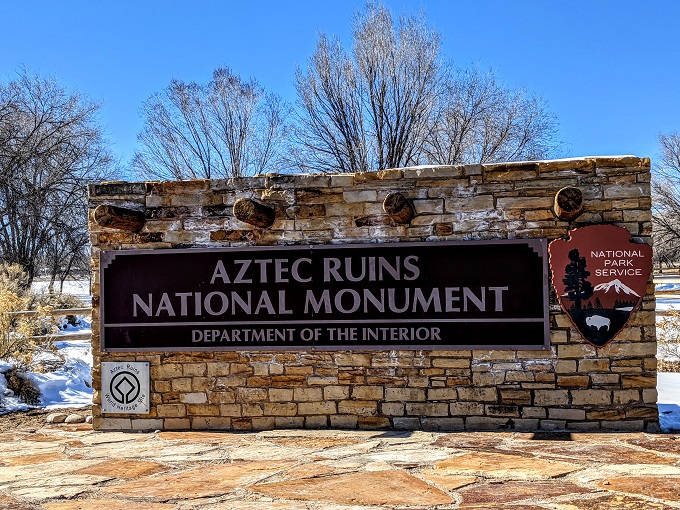
Aztec Ruins National Monument is run by the National Parks Service. We visited in February 2021 and, due to the pandemic, the visitor center was closed.
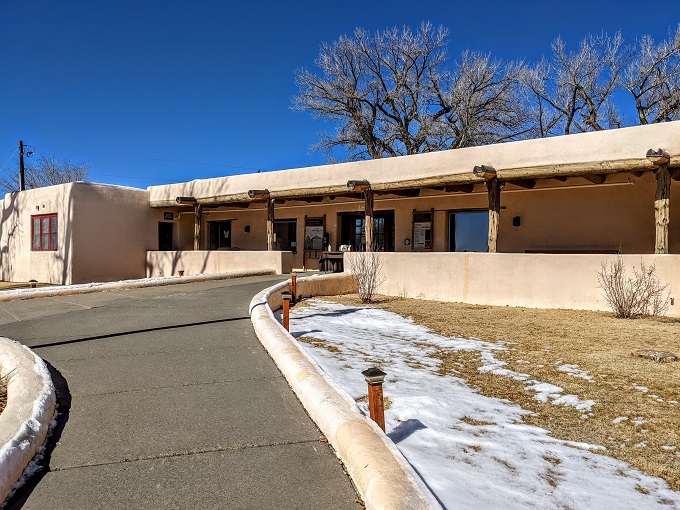
Despite the visitor center being closed, it was still possible to obtain information about the park. There was a table outside with leaflets about the park, as well as a stamp and ink so that we could stamp our National Park Service Passport.
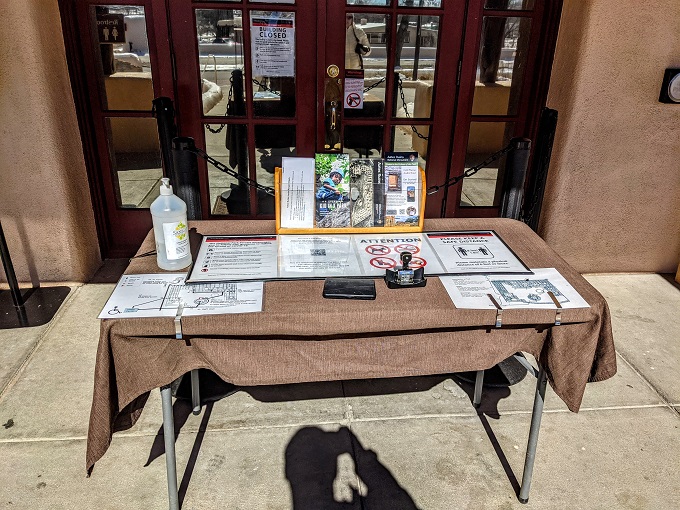
The ruins can be found along a path behind the visitor center. There was a picnic area just before you get to the ruins which would’ve been a nice place to have lunch if it weren’t for how cold it was when we visited.
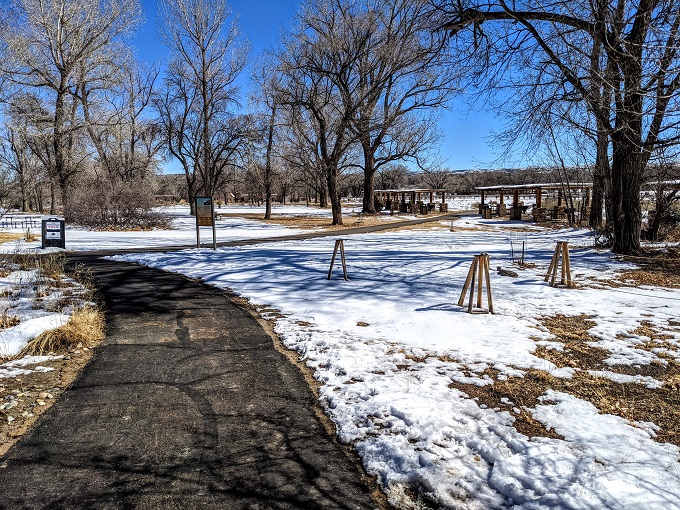
There’s a lot to see as you walk around Aztec Ruins National Monument, with 18 markers. Those markers correspond to a self-guided audio tour you can take; with the site being located in the city of Aztec, cell coverage was good enough to be able to call and learn as we walked around.
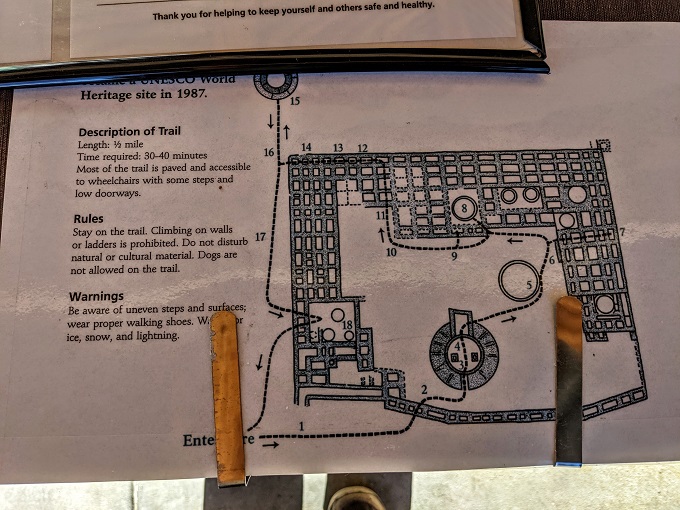

Aztec Ruins National Monument was the site of a great house which was as tall as three stories in parts and contained more than 400 rooms. Construction on the great house began in the late 1000s and only took 30 years or so to build. Compare that to Pueblo Bonito in Chaco Canyon, a great house which greatly expanded over the course of 300-400 years.
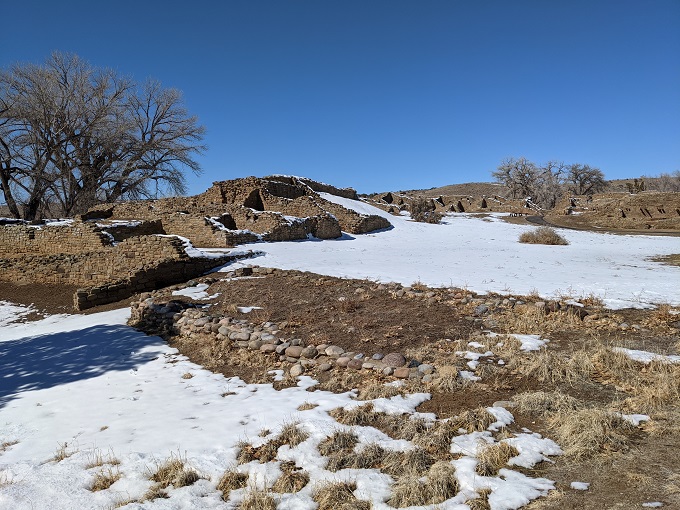
The most fascinating part of the site is the great kiva. This kiva was a public building which would’ve been used by the ancestral Puebloan community for ceremonies and other gatherings.
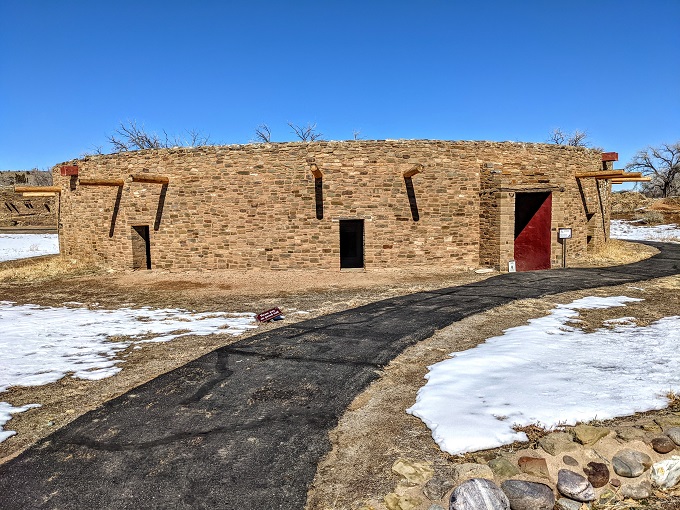
The reason this great kiva is so fascinating is because it’s been reconstructed to show what it would have looked like 1,000 years ago when it was originally in use. Earl H Morris excavated it in 1921 and oversaw its reconstruction in 1934.
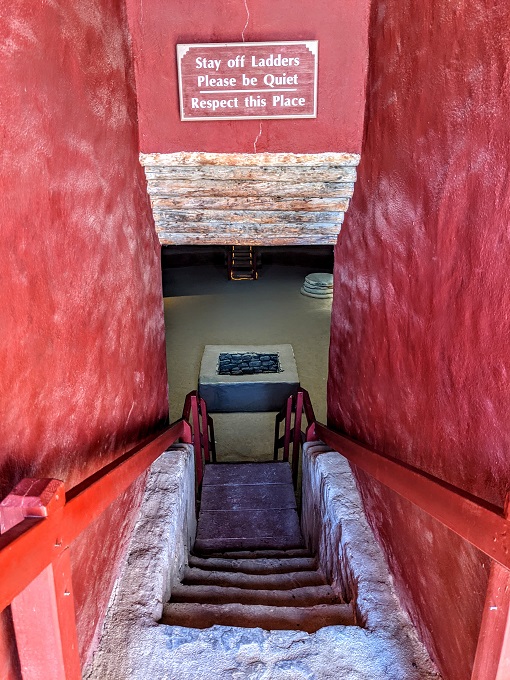
You take a staircase down into the kiva and it’s then that you get a much better sense of how it would’ve been used. In keeping with great kivas in other great houses, the one at Aztec Ruins National Monument had four columns, a firepit, vaults and more.
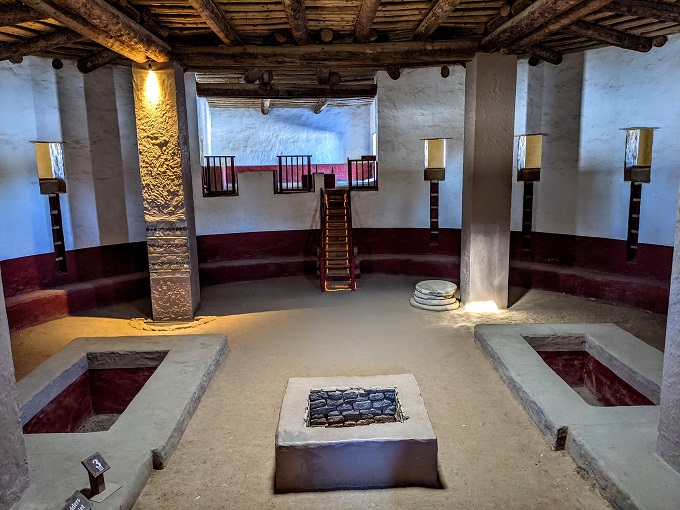
All around the perimeter were ladders which led up to short doorways.
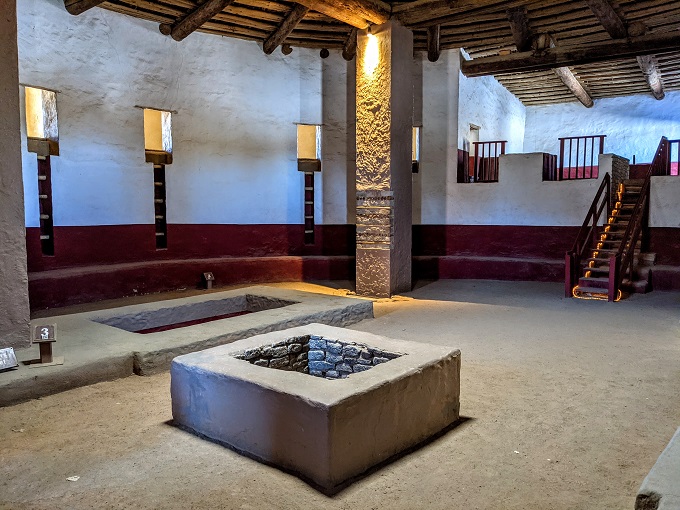
Above the firepit was a hole in the roof to allow the smoke to escape out of the room. This hole in the roof was used as the main entrance and exit for most kivas.
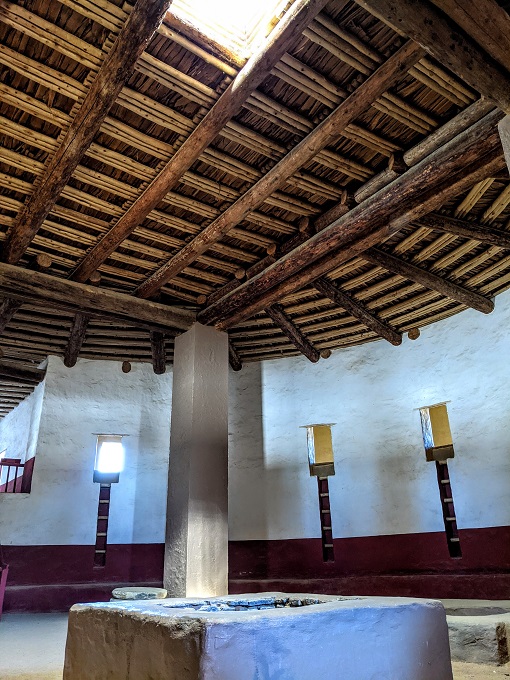
In this great kiva each column rested on four limestone discs which were transported from 30 miles away.
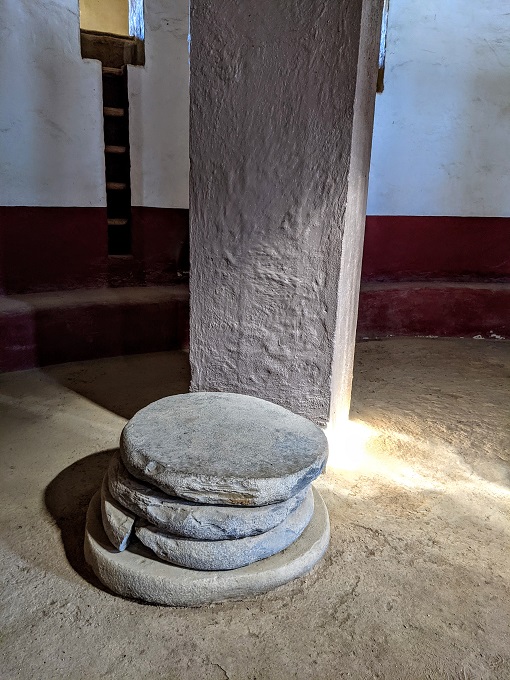
One of the columns has some of its masonry left exposed rather than being completely covered with plaster so that you can see how it was constructed.
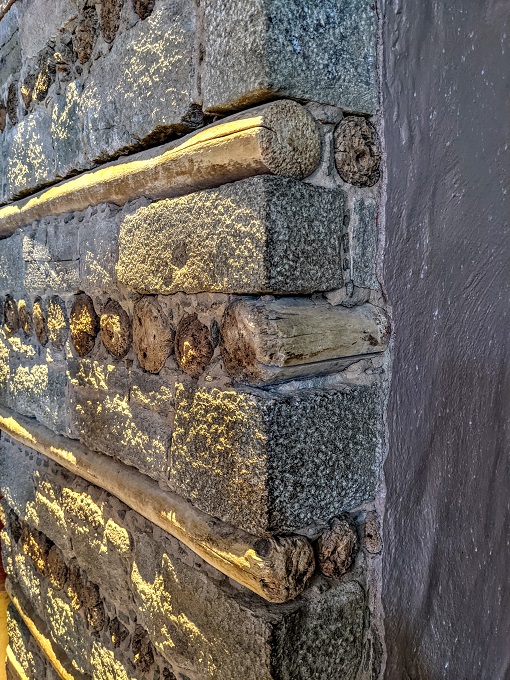
The red and white color in the great kiva wasn’t guesswork by Earl Morris. During excavation they found red and whitewashed plaster on the walls, so they tried to recreate that as best they could during reconstruction.
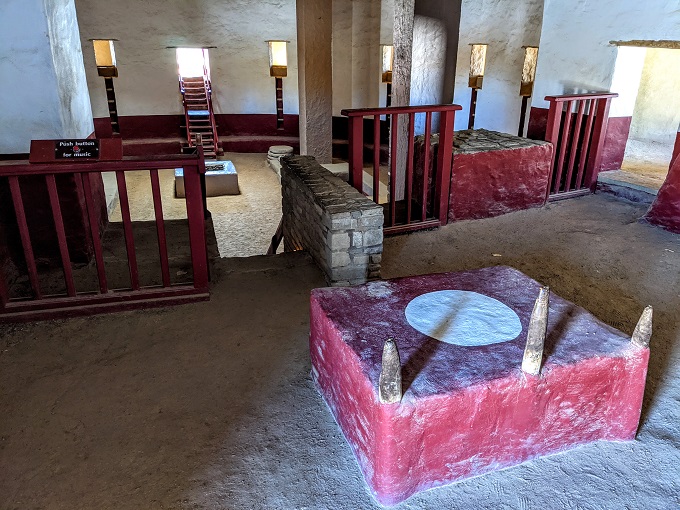
After exploring the great kiva, the trail continued outside. Next up was another kiva, but this one was smaller than the great kiva and hadn’t been reconstructed.
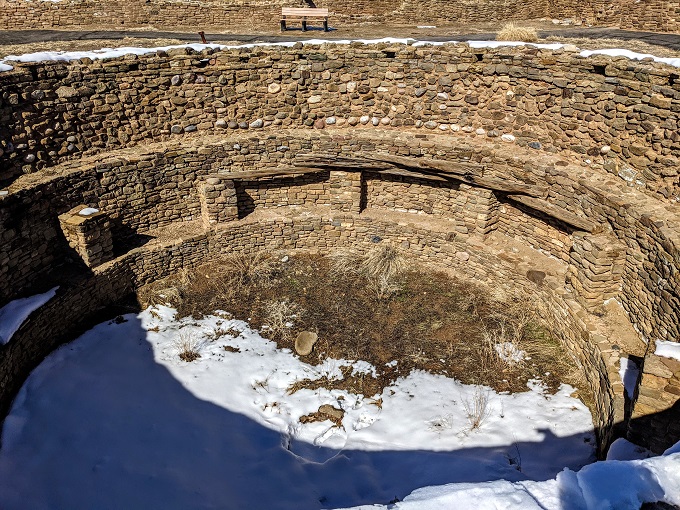
The roof in this kiva would’ve been domed with timbers resting upon each other. There are a few timbers that can be seen inside the kiva which give an idea of what the roof would’ve looked like; these weren’t original, but are what’s left from what was once a reconstructed roof. Unlike the great kiva which we got to enter down a staircase on its side, most kivas were entered by descending through a hole in the roof.
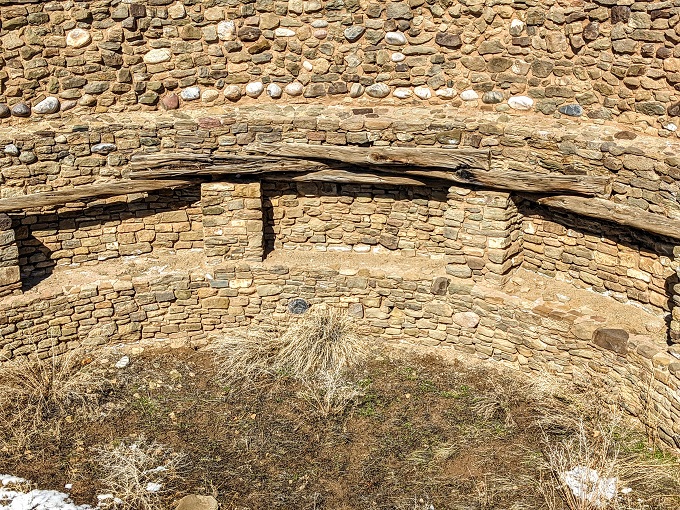
The self-guided tour leads you on to a section of the great house where you can see a couple of doorways which connected rooms at their corners. These were rare as they would’ve compromised the structural integrity of the building; archaeologists aren’t sure why the ancestral Puebloans would’ve taken that risk, so it’s thought that there was some kind of significance to their inclusion and placement in the great house.

Similar to how people today build extensions on their homes, the ancestral Puebloans did the same thing by adding rooms to the great house over time. You can walk through a section of the house which was extended to explore the slightly newer rooms more closely.
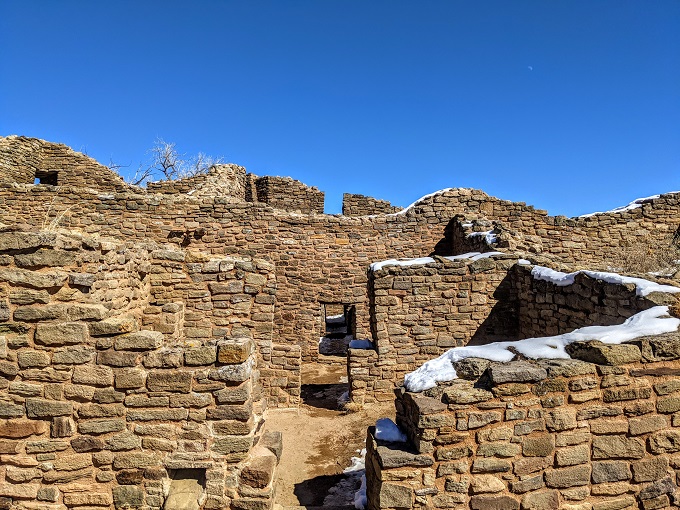
The great house contained a large plaza, an open area which was used as a community space. Excavations in the past discovered pottery dating from 1100-1200. The pottery designs suggest that ancestral Puebloans migrated between Aztec, Chaco Canyon and Mesa Verde in southwestern Colorado.
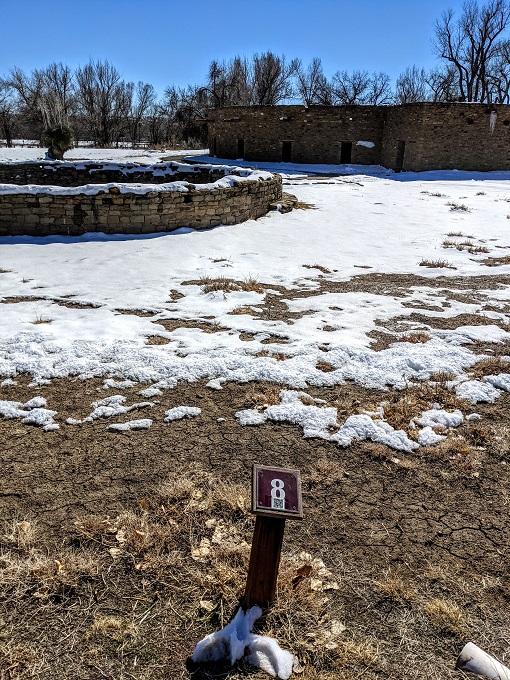
The trail continues on to another kiva. This one is in the heart of the great house and is one of the earliest parts of the house, having been constructed in the early 1100s. It’s thought to have been built by migrants from Chaco Canyon as the construction technique is similar to buildings found there.

Some rooms which opened out on to the plaza had T-shaped doorways which are thought to contain significance for Puebloans as some doorways are still constructed in that way today.
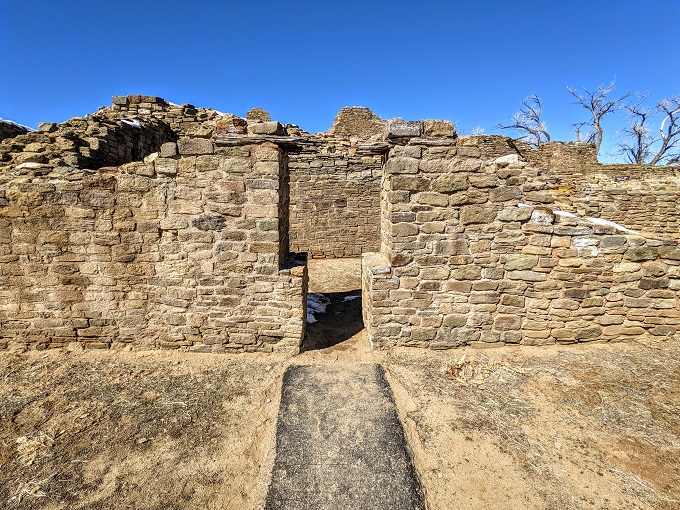
This set of rooms was added after the original Chacoan construction. As they were added later, the construction techniques were different which you can see in the different styles of masonry.
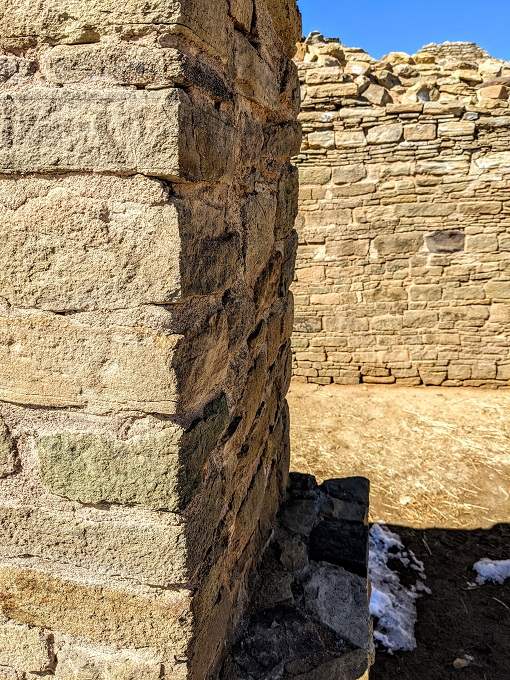
The next part of the great house you visit is a series of interior rooms. The trail continues through this part of the great house, so unlike some parts of the site where you only get to view rooms from a distance, in this section you get to walk through them.
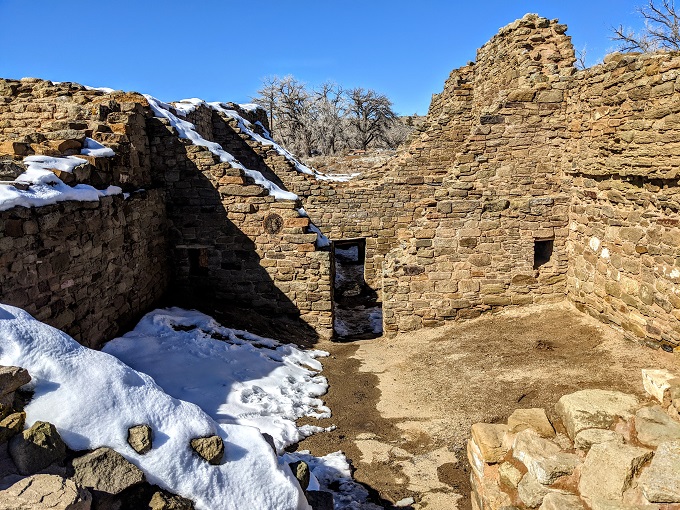
As with Pueblo Bonito at Chaco Canyon, the doorways aren’t very high which means you have to crouch down low when walking through them.
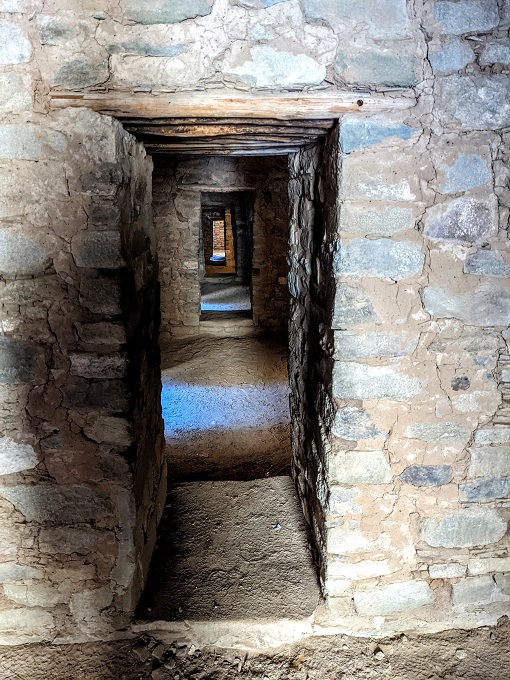
While walking through the interior rooms, off to the left there’s a room which has an original mat made of willows, left in the same place that it was used 800 years ago. Along with other types of barriers, these mats were used to block openings between rooms and the outdoors.
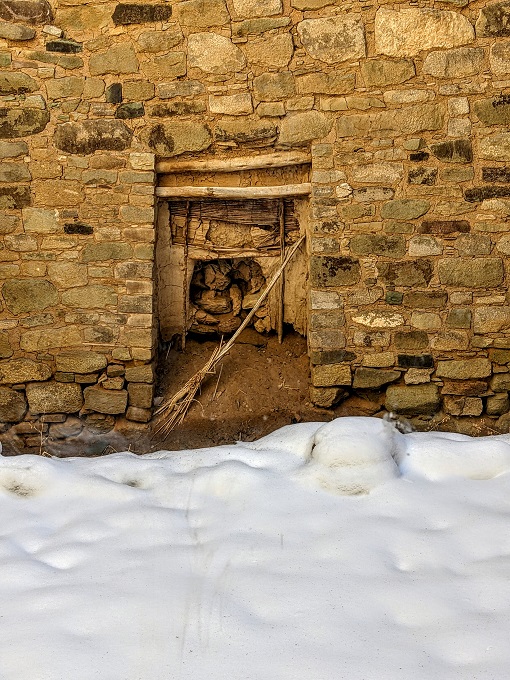
Some of these interior rooms still have their original roofs. The larger beams were made of spruce, Douglas fir or ponderosa pine, while the smaller beams were made of aspen or pine. To ensure the beams were as strong as possible, the trees were transported from more than 20 miles away to the north where they grew at higher elevation.
The fact that these interior roofs have been preserved so well means that Aztec Ruins National Monument is one of the most precisely dated historic sites in the entire US. By being able to work out when the wood was cut, archaeologists have been able to accurately date when different rooms were constructed.
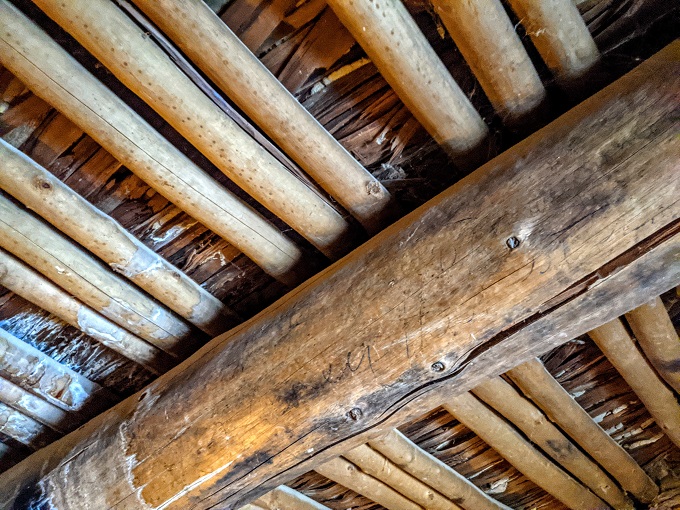
The route takes you back outside and up to a tri-walled kiva. It was rare for structures within great houses to have three walls like this, so it’s thought their construction in this way carried some kind of significance.
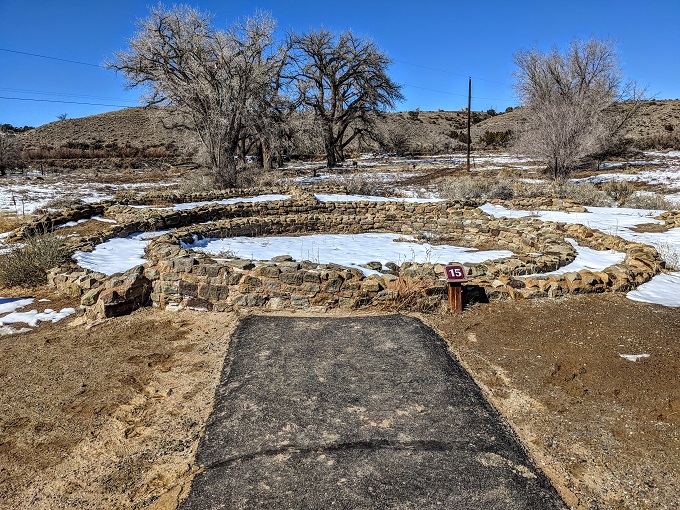
The sun played an important part in the lives of the ancestral Puebloan people. The north wall of the great house was built in such a way that the sun rose along the wall when standing at this spot on the summer solstice. Similarly, the wall aligns with sunset on the winter solstice.

The end of the trail takes you slightly uphill which gives a better view over the great house. From up here you can see even more of the interior rooms, as well as getting a better sense of how large the plaza was.
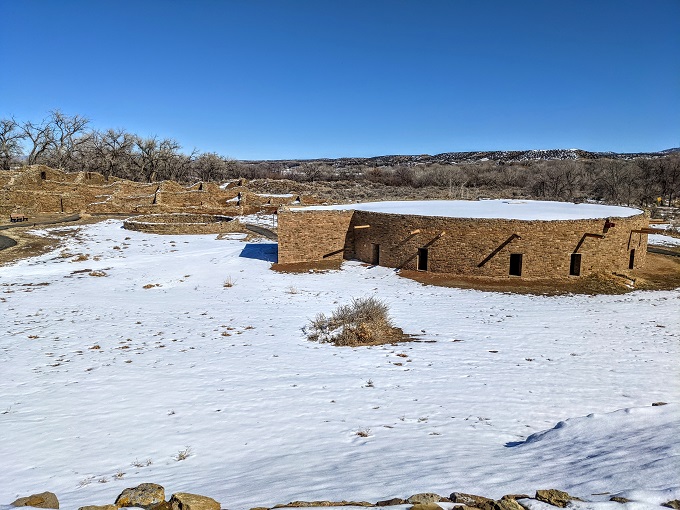
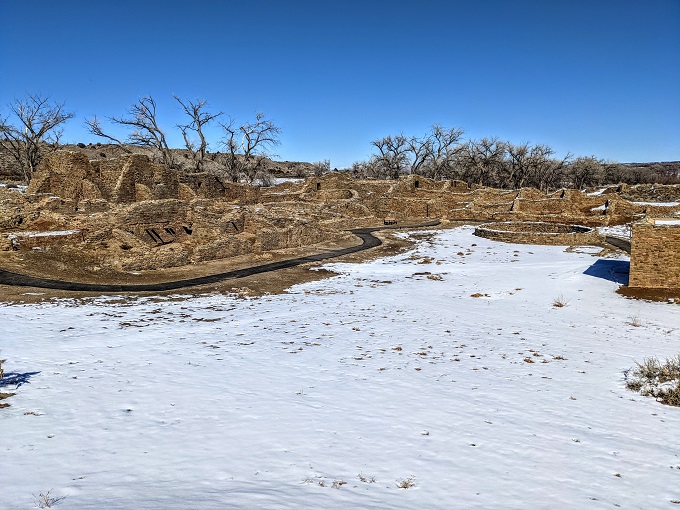
Final Thoughts
Even though Aztec Ruins National Monument isn’t as expansive as Chaco Culture National Historical Park, it’s well worth visiting nonetheless. There’s still a lot of the great house you can see considering it’s almost 1,000 years old and the site is far easier to get to seeing as it’s on the edge of the city of Aztec.
Its best feature is the reconstructed great kiva. We saw a bunch of kivas when we visited Chaco Canyon, but those were only ruins. The fact that you not only get to see a reconstructed kiva but get to walk through one makes it much easier to picture how they were used almost a millennium ago.
The self-guided audio tour also enhances the experience, providing more information about what you’re looking at in 30-45 second snippets.
Address
Aztec Ruins National Monument, 725 Ruins Rd, Aztec, NM 87410
[…] Northwest New Mexico had a couple of fascinating historical locations that we visited while staying in Bloomfield – Chaco Culture National Historical Park and Aztec Ruins National Monument. […]